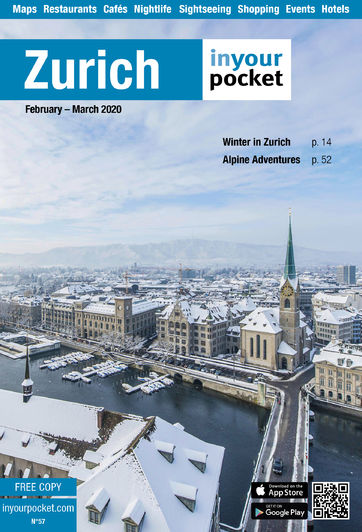Zurich's guilds: of mighty men and merrymaking
more than a year agoThe guilds – or Zünfte in German – not only organise Zurich's most characteristic holiday, they are also a major feature of the city's history. They date back to the 14th century, and one of their functions was to lay down rules for the different crafts and trades, so that competition between craftsmen stayed fair. Each Zunft organised particular crafts. The Zunft zur Safran was home to merchants of textiles and spices, the members of the Zunft zum Widder were cattle merchants and butchers and the Zunft zur Schmiden accepted blacksmiths, goldsmiths, clockmakers and doctors. A combination which might make you think twice about calling for medical care in the age of the guilds..
But the Zünfte were also part of the political system. In 1336, in what was called Brun's Revolution, Rudolf Brun, himself a knight, deposed the ruling nobility of Zurich and replaced them with the guilds – with him at their head, notabene. This of course was happening all over Europe at the time. From today's point of view it sounds a bit strange that the builders and bakers should take over the government. But these were leading economic enterprises at the time – the biotech and internet companies of the day, so to speak. It must be said, however, that normal craftsmen and merchants were soon dissappointed by the system. The richest merchants and the remaining nobility grabbed all the power for themselves, with normal craftsmen only playing a token role in governing the city.
Actually, some might say it's still a bit like that today. The members of the traditional Zünfte have access to excellent connections, and it is rumoured that many decisions in business and politics in Zurich are prepared in these circles. Political scientists actually consider Switzerland to be the Western democracy where links between politics and business are the closest, with many a member of parliament or even of government simultaneously acting as the CEO of a major company. And it's not only Zurich that has its traditional elite, Basel e.g. has the Teig („dough“), which is dedicated to a very visible philanthropic tradition or Bern has its Patrizier.
In Zurich the Zünfte definitely were rich and powerful at one time, as testified by their magnificent guild houses strewn all around the old town. Many of today's guilds use the buildings for periodic events, most have a grand hall with wood panelling and chandeliers and the like. Some of the guild houses are now hotels, such as Hotel Widder which houses the rooms of the Zunft zum Widder or the Hotel Savoy which is where the guild of the tanners convenes. The Zunft zur Meisen – guild of the wine merchants, saddle makers and painters – occupies a stately roccoco palace which can also be visited, as it houses the porcelain and faience collection of the Swiss national museum. In the guildhouse of the Zunft zur Letzi finally, a museum gives you much more background on the history of the guilds (see below).
But one of the most enjoyable encounters with guild history today is to have a meal in one of the guild houses which are now restaurants, enveloped in an atmosphere of mediaeval power. At restaurant Storchen on the Limmat for instance, which is where the guild of the fishermen and boatman are resident or at restaurant Haus zum Rüden where the Constaffel, guild of the nobles, is at home. And you can expect to eat well, as even today a hearty meal is often referred to in everyday Swiss German as a 'zünftige Mahlzeit', i.e. a guild-like meal.
Museums
-Zunfthaus zur Meisen, Münsterhof 20, www.nationalmuseum.ch
Porcelain and faience collection of the Swiss national museum.
-Guild Museum, Obere Zäune 19, www.zunftstadt.ch
Short film sequences (10-15 min) in each of the three rooms of the historic House To The Blue Sky, tell the history of the city and its guilds. One tells of the Lochmann family, another takes you on a boat ride on the river in the 18th century. Films in German and English.





Comments